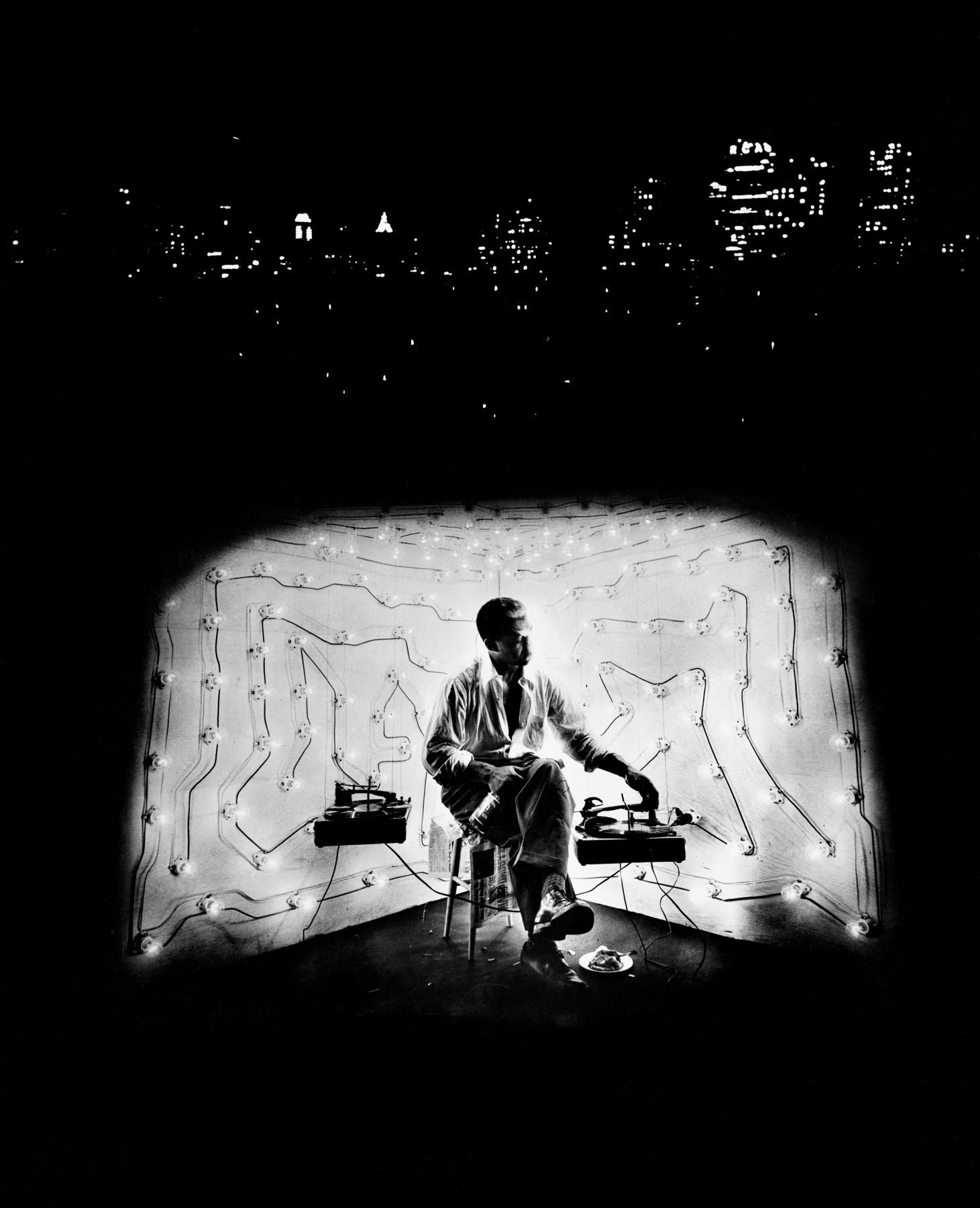
Photograph from “A Man Becomes Invisible” by Gordon Parks, 1952. Source: The Gordon Parks Foundation
In August 1952, to celebrate the publication of Ralph Ellison’s masterpiece Invisible Man, Life magazine ran a three-page photo-story titled “A Man Becomes Invisible.” Gordon Parks, Life’s first African-American staff-photographer, and a friend of Ellison, took the pictures. In his two decades at the magazine, Parks (1912-2006) did everything he could, within its constraints, to fight against racism and poverty, raise public awareness, and campaign for social justice and civil rights.
He is celebrated for documentary pictures such as his “Harlem Gang Leader” story for Life in 1948, and his segregation studies, also made for the magazine, are currently on show at two venues. In 2012, the Howard Greenberg Gallery in New York mounted an exhibition curated by the artist Glenn Ligon probing the links between Parks’ documentary assignments in Harlem, his interpretations of Invisible Man, and other photographs, not published in Life, made in the same spirit.
This picture, the full-page conclusion to “A Man Becomes Invisible,” is an early and, for Parks, unusual example of a staged photograph. The set he constructed for the shot visualizes a scene from the novel’s prologue, where the invisible man describes the basement he lives in, and his battle with the electricity company Monopolated Light & Power. He has tapped into a power line illicitly and wired his ceiling with 1,369 light bulbs—the number is military slang for “unlucky cocksucker”—and now he is working on the wall. He has a radio-phonograph and plans to install four more so he can listen to five recordings of Louis Armstrong singing “(What Did I Do to Be So) Black and Blue.” While savoring this lament, he likes to eat vanilla ice cream doused in sloe gin.
These details, adjusted by Parks as necessary, can all be seen here. With great panache, he superimposes the fabricated scene, like a glowing electric cave, on to a second picture of New York at night, suspending the basement in a deep tank of darkness. The parallel realities magnify the feeling of isolation and invisibility while asserting the underground refuge as a zone of defiant imagination and possibility. The two turntables hanging by wires, a much better choice of prop than a bulky phonogram, now seem strangely contemporary, a clairvoyant prediction of the rise of the DJ, club culture, and hip hop. The walls laced with bulbs could be part of a downtown art gallery installation. This foreshadowing adds another layer to a picture and photo-story with lasting resonance in the history of the media’s slow awakening to the bitter experience of African-Americans.
